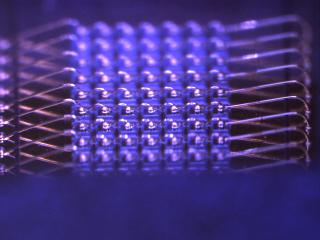LED-based applications are growing and cover a broad range of markets including automotive lighting applications such as indicators, sport utility, and head lamps; camera functions like display backlight and projection systems, architectural uses like accent lighting for buildings, and signs.
LEDs are bright, efficient and quick to react. They have become the substitute for light bulbs in many applictions because they use less power, have longer lifetimes, produce little heat and emit colored light.
Matrix LED packaging presents challenges for both die attach and wire bonding compared to single-die packages. High-brightness LED applications require maximum thermal transfer to achieve performance requirements.
The matrix LED process steps include: 1) material preparation, 2) pick and place, 3) pulsed reflow, 4) clean, 5) wire bond, and 6) test. Critical to the LED assembly process is a void-free eutectic solder interface between the diode and its substrate. This provides the thermal and electrical connections needed to generate a stable transmission of light. Eutectic die attachments transfer the tremendous amount of heat generated by the diodes to maintain the temperature stability of the device. Controlling the eutectic attach process is critical to yield and reliability. 
LED matrix assembly us an extremely temperature-sensitive process that requires careful control during assembly. The reflow profile during an in-situ eutectic die attach process is engineered to provide consistent melting and void-free attach interface. This is neccesary for consistent heat transfer from the diode and contributes significantly to temperature stabilization during LED operation.